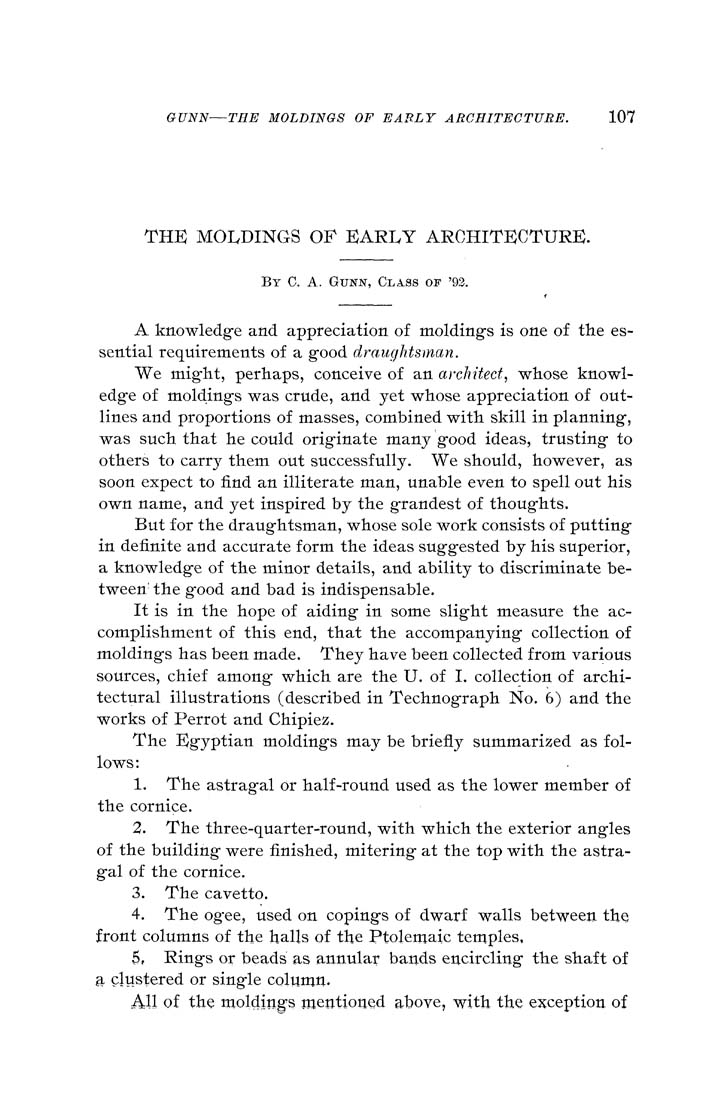GUNN—THE MOLDINGS OF EARLY ARCHITECTURE. 107
THE MOLDINGS OF EARLY ARCHITECTURE.
By C. A. Gv^NN, Class of '92.
A knowledge and appreciation of moldings is one of the es¬
sential requirements of a good drauijhtsman.
We might, perhaps, conceive of an architect^ whose knowl¬
edge of moldings was crude, and yet whose appreciation of out¬
lines and proportions of masses, combined with skill in planning,
was such that he could originate many good ideas, trusting to
others to carry them out successfully. We should, however, as
soon expect to find an illiterate man, unable even to spell out his
own name, and yet inspired by the grandest of thoughts.
But for the draughtsman, whose sole work consists of putting
in definite and accurate form the ideas suggested by his superior,
a knowledge of the minor details, and ability to discriminate be¬
tween* the good and bad is indispensable.
It is in the hope of aiding in some slight measure the ac¬
complishment of this end, that the accompanying collection of
moldings has been made. They have been collected from various
sources, chief among which are the U. of I. collection of archi¬
tectural illustrations (described in Technograph No. 6) and the
works of Perrot and Chipiez.
The Egyptian moldings may be briefly summarized as fol¬
lows:
1. The astragal or half-round used as the lower member of
the cornice.
2. The three-quarter-round, with which the exterior angles
of the building were finished, mitering at the top with the astra¬
gal of the cornice.
3. The cavetto.
4. The ogee, used on copings of dwarf walls between the
front columns of the halls of the Ptolemaic temples,
5. Rings or beads as annular bands encircling the shaft of
0L clustered or single column.
Ail of the moldings njentioiied above, with the exception of
|








